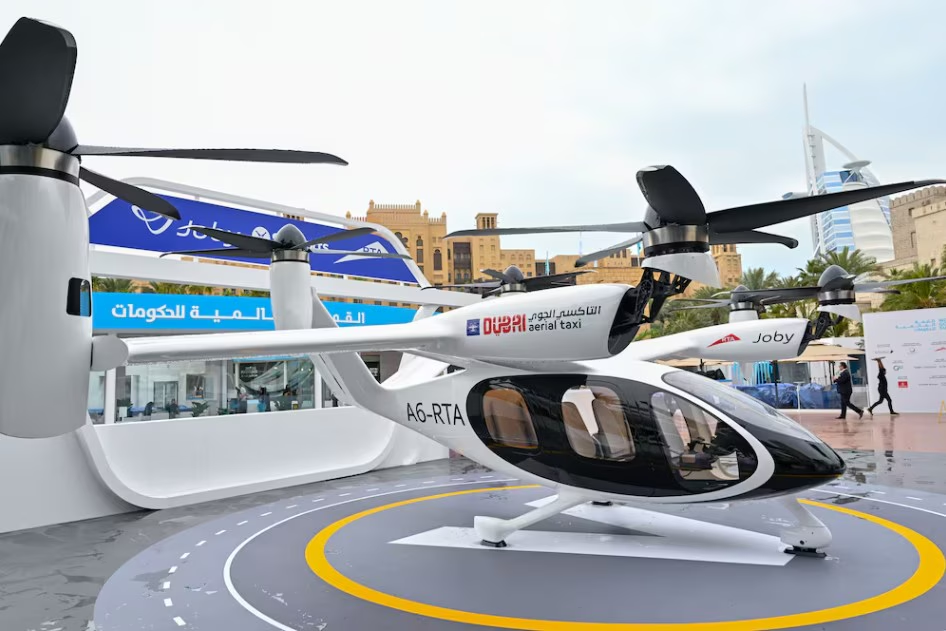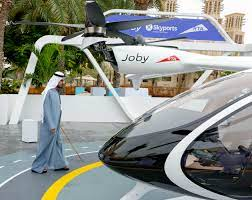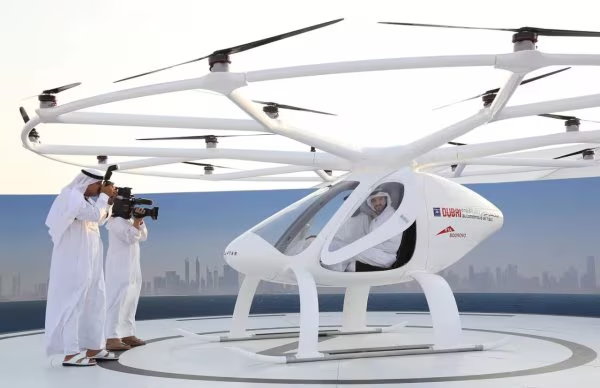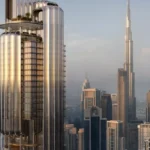Now Reading: “Dubai’s Flying Taxis Set to Revolutionize Travel by 2026”
-
01
“Dubai’s Flying Taxis Set to Revolutionize Travel by 2026”
“Dubai’s Flying Taxis Set to Revolutionize Travel by 2026”

Table of Contents
Dubai is famous for pushing the boundaries of innovation — from towering skyscrapers to driverless metro trains. Now, the city is aiming for the skies with an ambitious plan: introducing air taxis as part of its urban transport system by 2026.
This futuristic project is not just a dream; it is rapidly turning into reality. The Roads and Transport Authority (RTA) of Dubai, in partnership with international aviation companies, has officially confirmed that the city is preparing to launch the world’s first commercial air taxi service.
What Is the Air Taxi Project?

The air taxi system, often called the “flying car” project, will use electric vertical takeoff and landing vehicles (eVTOLs) — quiet, zero-emission aircraft designed for short urban flights. These aircraft can carry passengers over the city, reducing travel time significantly compared to road transport.
In February 2023, Dubai signed a major agreement with Joby Aviation, a California-based company specializing in eVTOL technology. The contract allows Joby to operate the air taxi service in Dubai, giving the company exclusive rights for six years once the project launches. This makes Dubai the first city in the world to set an official timeline and operational plan for air taxis.
What Will the Experience Look Like?

According to the RTA, air taxi stations — called “vertiports” — will be built at key locations across Dubai. The first phase of the project will include vertiports at:
- Downtown Dubai (near Burj Khalifa)
- Dubai Marina
- Dubai International Airport (DXB)
- Palm Jumeirah
Passengers will be able to book air taxi rides through a mobile app, similar to how they book car rides via Uber or Careem. The aircraft will fly at low altitudes, giving riders spectacular views of the city’s famous landmarks, while drastically cutting down commute times.
For example, a trip from Dubai International Airport to Palm Jumeirah, which usually takes 40 to 50 minutes by car, is expected to take just 10 minutes by air taxi.
Features of Dubai’s Air Taxis

Dubai’s air taxis will offer several advanced features to ensure safety, comfort, and efficiency:
- Zero Emissions: Powered by electricity, the air taxis will produce no harmful emissions, supporting Dubai’s goal to become a green, sustainable city.
- Low Noise Levels: Unlike helicopters, these eVTOL vehicles are designed to be much quieter, making them suitable for urban use without disturbing city life.
- Autonomous or Piloted Options: Initially, the taxis will have human pilots for safety, but future versions may become fully autonomous.
- Capacity: Each vehicle is expected to carry up to four passengers, plus a pilot.
Challenges and Safety Concerns
As exciting as this project sounds, several challenges remain:
- Safety Regulations: The Dubai Civil Aviation Authority (DCAA) is working on strict safety standards to govern air taxi operations.
- Public Trust: Convincing residents and tourists to embrace this new mode of transport will take time, education, and trial runs.
- Infrastructure: Building vertiports across the city, integrating them with existing transport networks, and ensuring seamless passenger experience are key challenges.
- Costs: Initially, the rides may be expensive, likely affordable only for high-income travelers or tourists. However, as the technology matures and demand rises, prices are expected to drop.
Why Dubai Is Leading the Way
Dubai’s government has always focused on becoming a global leader in technology and smart city solutions. From robot police to driverless taxis, the city has a history of testing futuristic concepts early.
The air taxi project is part of Dubai’s broader “Dubai 2030 Urban Mobility Strategy,” which aims to make 25% of all transport autonomous by 2030. The plan includes flying taxis, autonomous cars, and drones for delivery services.
His Highness Sheikh Mohammed bin Rashid Al Maktoum, Vice President and Prime Minister of the UAE, has stressed that “future cities must be built around new mobility solutions.”
This support from the highest level of government ensures that the air taxi project will receive the resources and policy backing it needs to succeed.
Global Impact
If successful, Dubai’s air taxi project will become a model for other major cities worldwide.
- Paris plans to launch limited air taxi services for the 2024 Olympics.
- Los Angeles and Tokyo are also developing similar eVTOL systems.
But Dubai’s 2026 goal is currently the most ambitious in terms of full-scale public operations.
What to Expect Next?
The first trial flights of Dubai’s air taxis are planned for late 2025. These flights will help fine-tune technology, safety protocols, and passenger experiences.
Commercial operations for the public are expected to begin by early 2026, with Dubai International Airport and Downtown Dubai likely being the first operational routes.
As the launch date approaches, residents and tourists may soon see air taxis flying over Dubai’s skyline — making the city one of the first places in the world where flying cars are not just science fiction but part of daily life.
Final Thoughts
Dubai’s air taxi project could forever change how cities think about urban transport. With its commitment to innovation, sustainability, and convenience, Dubai is once again showing the world what the future might look like.
While there are technical and economic challenges to overcome, the 2026 timeline seems realistic, thanks to strong government support, technological readiness, and international partnerships.
If everything goes as planned, the sky will no longer be the limit — but the new highway — for Dubai’s residents and visitors.
Read More:- Portugal’s Dama Art Gallery Takes Global Lead in Art Movement Now 2025



















